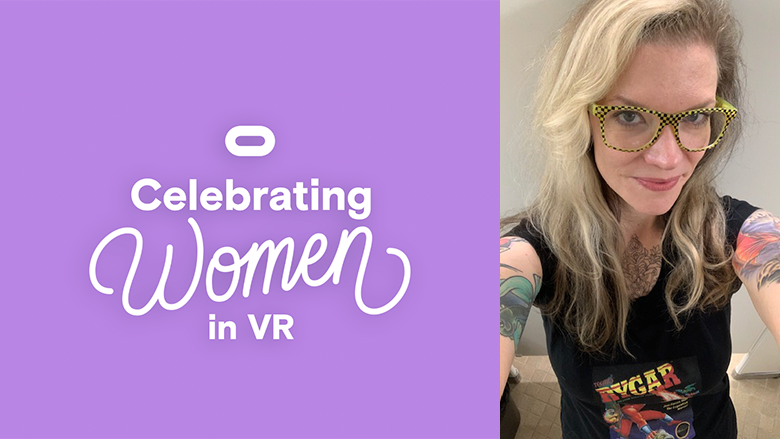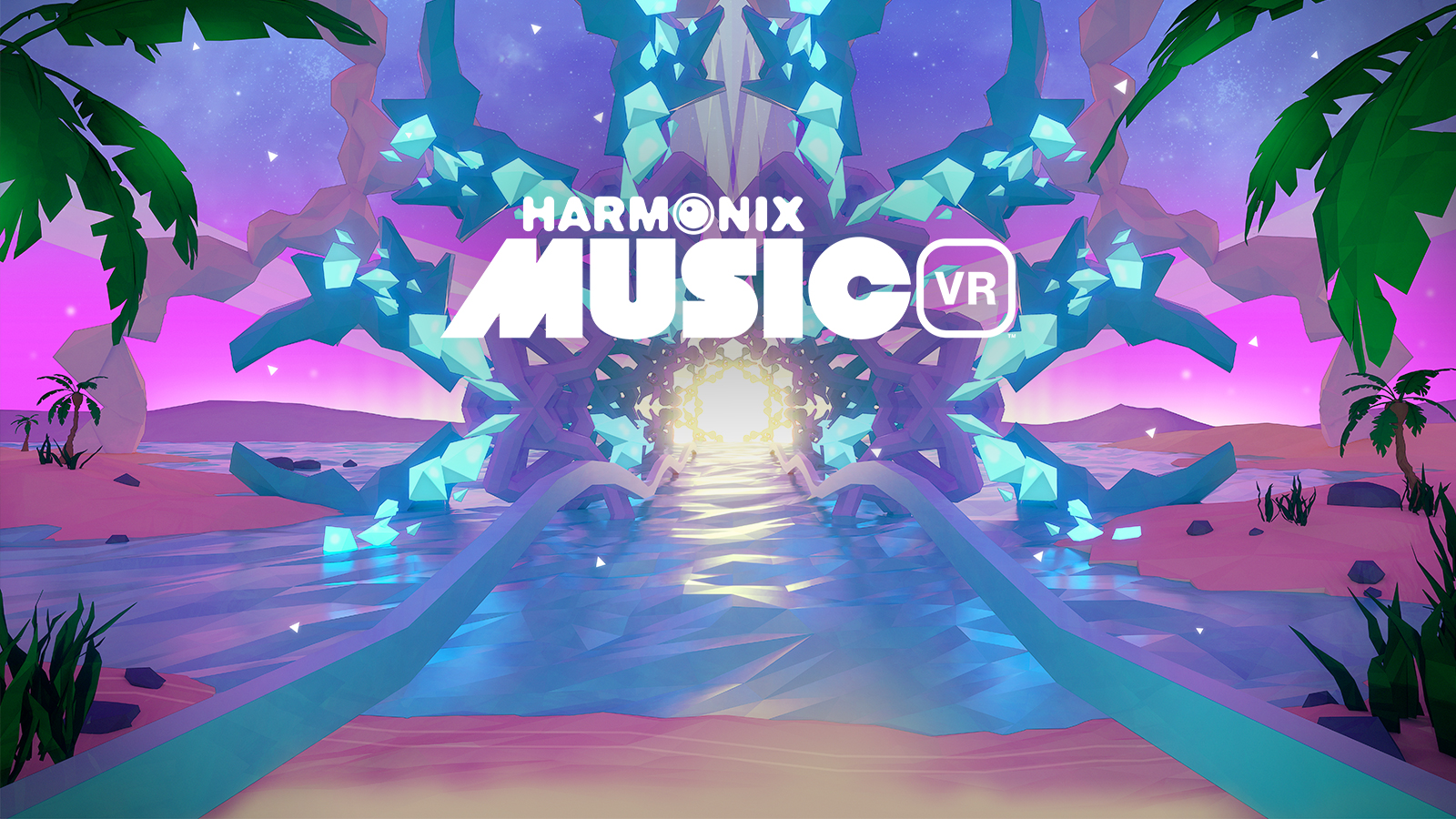Oculus has been doing a fantastic job this spring of recognizing the most powerful women inside of the virtual industry. Helen McWilliams is a VR developer for Harmonix Music Systems, and is the VP of Creative at the studio.
She is a musician that is obsessed with bringing people together through the power of the strings. She also loves to push the boundaries of technology, especially when it comes to VR gaming. The has been one of the biggest leaders in the industry since 2015.

She has had the opportunity to work on all of the Harmonix VR games, including hits like Rock Band VR and Dance Central. As many know, Harmonix has bene one of the leaders in the rhythm VR world.
With Bram, an Oculus Studios Game Producer, sat down with McWilliams to get an inside look at her success throughout the years. You can check out the entire blog post on the Oculus Blog site, and you can also read the entire interview below.
Oculus Interview
How did you get your start in the tech industry?
Helen McWilliams: I started at Harmonix 16 years ago (!) as a QA Tester on EyeToy: AntiGrav. It’s the only game we’ve ever made as a studio that isn’t a music game! Was so thrilled to get a foot in the door, and basically just did every job and took every opportunity I could get for the next 16 years.
Tell us about your current role.
HM: I’m VP of Creative, which I’m pretty convinced is the best job at the studio. The Design, Art, and Audio departments report up to me. I get to drive a lot of new IP development and help shape the creative on the games we release. We have an AMAZING creative department, so a lot of my job involves putting rad people in positions where they can thrive and then ensuring they have the support they need to crush it.
Who’s your favorite figure from women’s history?
HM: Okay, so you asked my favorite, so I have to go with Joan Jett, haha. When I was a kid, I saw her on television—I think it was probably the “I Love Rock ‘n’ Roll” video—and distinctly remember thinking, “Oh, that’s what I am. Whatever that person is, that’s what I am.” She not only gave me a vision of the kind of musician I could be, but also gave me my first notion of a kind of identity I could have. A brilliant friend of mine said, “Rock ‘n’ roll is its own gender,” and Joan Jett was my first experience of what that meant. She’s just such a badass trailblazer, and she puts so much energy and passion into her performances.
How do you see yourself making women’s history?
HM: I have been incredibly lucky to be a part of video game history. Rock Band, Dance Central, Guitar Hero—those were huge games that were not made by men, but by diverse teams that I was honored to be a member of. I hope I can be one of many, many people of marginalized genders who can represent to young people that there is a place for them in video games, in tech, and really in any space they want to occupy.
If you could give one piece of advice to a young girl considering a career in tech or the arts, what would it be and why?
HM: Don’t be afraid to carve out your own space. Multiple times in my career, I didn’t feel like I saw a role that I could take on—I don’t have a computer science degree, I’m garbage at art, I can’t read music—so I learned to invent roles that were custom-tailored to what I can and do bring to the table. I would say, “Hey I wrote a req for a job that we really need here at the studio—it’s someone who can write in-game text and narrative, and produce our games, and direct VO, and do some PR, and manage people, and some random other stuff. We need somebody to do that job, and the title is X title, and oh hey look, I’m amazing at all of this, so you should give that job to me, and here’s what I want for a salary.” You don’t need to fit any specific mold in order to add value—you have special strengths that any company would be thrilled to benefit from, and just promote the hell out of those strengths.
How do you see women pushing the state of the art forward in the fields of augmented and virtual reality?
HM: I’ve already seen women driving incredible advances in those fields at Harmonix. One area where I think we are dramatically and quickly improving things is in the area of online/virtual comfort, and protecting against physical encroachment and harassment in VR. I’m not sure men who have experienced this less in the physical world are as cognizant of the need to protect and design strategies against it. I’ve watched that sort of protective design in VR improve so quickly in the last few years, and I believe women are driving it.
Where have you encountered support and advocacy for women and other underrepresented groups in the VR industry?
HM: Have always felt great support from our partners at Oculus!
What concrete steps can people take to help make the tech industry a more inclusive and welcoming space?
HM: Some steps that we’ve taken at Harmonix which have resulted in big improvements in hiring recently:
- Phone screen as many candidates as you can, including as many people that could add to your company’s diversity—you never know if you’re going to meet someone who is just so mind-blowing and cool that you want to hire them, but you can’t gauge that just from that person’s resume or work history.
- Find the right roles for the right individuals—if you interview a person who would add to your company’s diversity, but they don’t have all the skills yet for the particular role you are hiring for, consider them for other positions where they could excel. If you find someone rad, find a role for them instead of demanding that they conform to the role.
- Don’t hire anyone until you have a big enough pool of candidates that includes candidates who would add to your diversity. Hire the best candidate for the position, but don’t hire until you know you’ve reached communities and individuals who would add to your diversity because you will be missing out on interesting candidates!
How do you go about designing games for a diverse audience and ensuring representation of strong women characters in your own work?
HM: Designing for broad audiences is a pillar of our creative strategy at Harmonix. The main way we achieve that is by trying to build diverse teams. We have incredible artists and designers who naturally are driven towards diverse character representation in our games.
What’s your favorite piece of AR/VR content and why?
HM: I know it’s so obnoxious to pick a Harmonix game, but it’s AUDICA. I am obsessed with that game. I just love rhythm games (obviously), and it’s one of my favorites ever.
Where do you see yourself in five or 10 years?
HM: Hopefully still at Harmonix in this exact job, but having made three to 10 more incredible music game experiences that push the boundaries of music technology and bring the joy of creating and playing music to millions more players! Also I want to have put out a few more albums of music, and I’d like to be better at palm muting by then.
Anything else you’d like to share with our readers?
HM: Keep an eye out for what’s coming from Harmonix! We have such cool stuff in the works, I can’t wait for you all to experience everything.






























